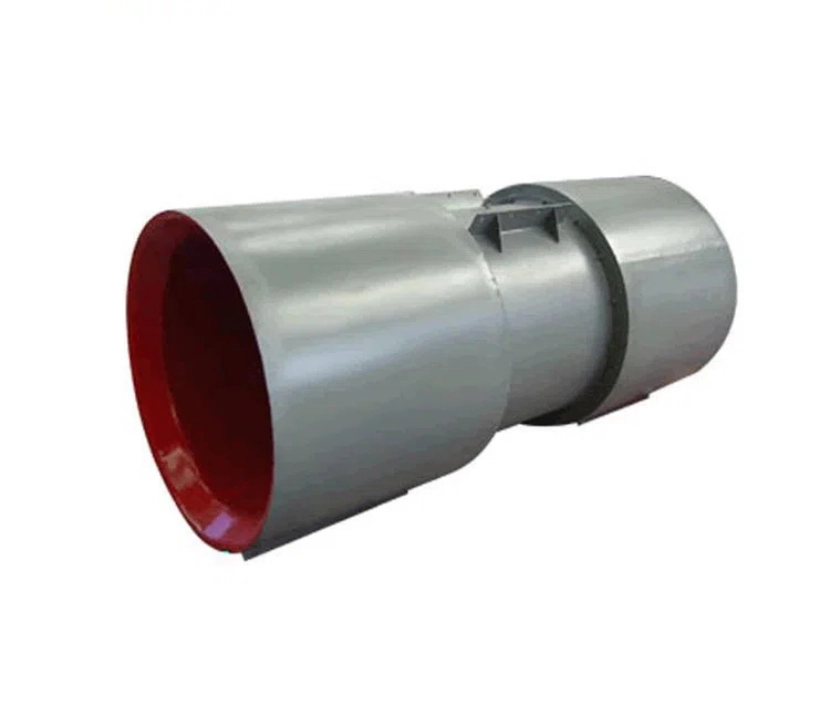
Understanding the Role of a Tunnel Ventilation System in Underground Mining
Why Ventilation is Critical in High Tunnels
Okay, so in underground mining, ventilation isn’t just about feeling nice—it’s mega important for keeping things safe and getting stuff done. High tunnels are like these super closed-off spots, you know? They can get filled up with bad stuff like methane gas, carbon monoxide, or dust from all the machines. If you don’t have good airflow, things can turn dangerous real quick.
You gotta have solid ventilation and drainage to keep tunnels safe for work. The air inside needs to stay between -5°C and 40°C. Oh, and humidity at 25°C can’t go over 85%. That’s why you need a real good tunnel ventilation system—it keeps the air clean and the temp just right.
Key Functions of a Tunnel Ventilation System in Mining Operations
A tunnel ventilation system does an important jobs:
- Air Quality: It clears out yucky gases and dusty air.
- Keeping Cool: Fresh air stops things from getting too hot.
- No Explosions: It gets rid of stuff like methane that could go boom.
- Safe for Workers: Makes sure miners can breathe okay deep down.
- Machine Safety: Keeps equipment from overheating in tight spots.
Tons of machines can’t work safe around flammable stuff like gas or coal dust without a strong ventilation system keeping everything chill.
Differences Between Agricultural and Mining Tunnel Ventilation Systems
Both farm and mining tunnels move air, but they’re after totally different things:
- Farm tunnels worry about humidity, helping plants breathe, and adding CO₂.
- Mining tunnels focus on kicking out bad gases, stopping explosions, and handling rough conditions.
Farm systems are kinda light-duty. They don’t need much power. Mining ones, though, gotta be tough as nails to deal with crazy heat, dust, or chemical junk.
Types of Tunnel Ventilation Systems Used in Underground Mining
Forcing vs. Exhausting Systems: What’s the Difference?
Ventilation systems come in two big types—forcing and exhausting.
- Forcing Systems shove fresh air in with fans at the tunnel’s entrance. This keeps the air pressure up inside.
- Exhausting Systems suck out the bad air with fans way inside or at the exit.
Which one you go for depends on how your mine’s set up, how deep it is, or what kinda work’s going on. Forcing’s great for getting clean air to where people are working. Exhausting’s better for yanking out nasty gases from deep down.
Ducted and Ductless Ventilation Options
You can move air with or without ducts:
- Ducted Systems use bendy or hard tubes to send air right where you need it. These are super common when you’re just starting to dig.
- Ductless Systems work in bigger mines. They use natural air paths and fans placed in smart spots.
Some series mining local fans are, like, totally efficient and not too loud. They save power and work for both ducted and ductless setups, so they’re real handy for all sorts of digging jobs.
Applications of Axial Flow Fans and Explosion-Proof Fans
Axial flow fans are pretty awesome ‘cause they push tons of air over long stretches. They’re perfect for long tunnels that need steady air from one end to the other.
Explosion-proof fans are a must if flammable gases might pile up. They’re built with special stuff to stop sparks or overheating—no joke, that’s super important in places with flammable gases like gas or coal dust.
Factors to Consider When Selecting a Tunnel Ventilation System
Mine Depth, Layout, and Airflow Requirements
The deeper or weirder your mine’s layout, the tougher your ventilation system’s gotta be. How much air you need depends on:
- How many work spots are busy
- Fumes coming off machines
- How many folks are working underground
- How far it is from the surface
A smart system spreads air nice and even all over while using as little power as it can.
Gas, Dust, and Temperature Control Needs
Every mine’s got its own headaches. Some have way too much methane. Others kick up a silica dust or get super hot from rocks or machines running.
The tunnel’s gotta stay between -5°C and 40°C, even when everything’s going full blast. A good system deals with gases, traps dust with filters or water sprays, and keeps air moving to handle heat.
Compliance with Safety Standards and Certifications
To keep things safe and follow the rules, ventilation systems need big-deal standards like CE for Europe or ISO9001 for quality. These show the gear’s reliable and built safe, which is, like, super key for tough mining spots.

Evaluating Performance Metrics of a Tunnel Ventilation System
Airflow Rate, Static Pressure, and Power Consumption
Three big things tell you if a ventilation system’s any good:
- Airflow Rate (m³/min): Shows how much fresh air hits work areas.
- Static Pressure (Pa): Tells how well fans push air through stuff like tubes or filters.
- Power Consumption (kW): Affects how much you pay for electricity over time.
Getting these balanced means your system works great without eating up too much power.
Durability in Harsh Underground Environments
Mines are rough, man. Equipment’s gotta deal with wet, dusty air and not fall apart. Humidity at 25°C can hit 85%, and water or blasting can make things even messier.
Fans gotta handle shaking from nearby drills without breaking down. That’s why stuff like stainless steel cases or sealed motors is the way to go.
Maintenance Accessibility and Long-Term Cost Efficiency
Fixing stuff underground is a pain ‘cause space is tight. Systems you can take apart quick save a buncha time. Also:
- Remote monitors keep an eye on how fans are doing.
- Smart fix-it plans make gear last way longer.
- Energy-saving motors cut your power bills.
Systems that are tough and easy to fix save you cash over years of mining.
Frequently Asked Questions
- How do you vent a high tunnel?
You can use natural vents like openings at the top or fans like axial flow ones. It depends on the tunnel’s size, what it’s for (like farming or mining), and what the air needs. - What type of fan is best suited for underground mining?
Axial flow fans are awesome ‘cause they move tons of air real well. Explosion-proof ones are needed if you’re near stuff like coal dust or methane gas. - Can I use agricultural ventilation systems for mining purposes?
No way—mining needs heavy-duty gear to clear bad gases and handle rough spots. Farm systems are lighter and mostly about humidity. - What certifications should I look for when purchasing a tunnel ventilation system?
Look for CE if you’re in Europe or ISO9001 for quality anywhere. Explosion-proof ratings might be needed based on your local rules. - How does altitude affect fan performance underground?
Up high (over 1000 meters), air’s thinner, so fans don’t work as good. You need special designs or bigger fans to keep things running right.
Wanna know more about ventilation systems built just for your mining gig? From planning to setting up, hit us up today! QINGDAO ZONGDA MACHINERY CO., LTD., started 10 years ago by folks with a ton of mining smarts, offers killer solutions to keep your work safe and smooth all over the world.




